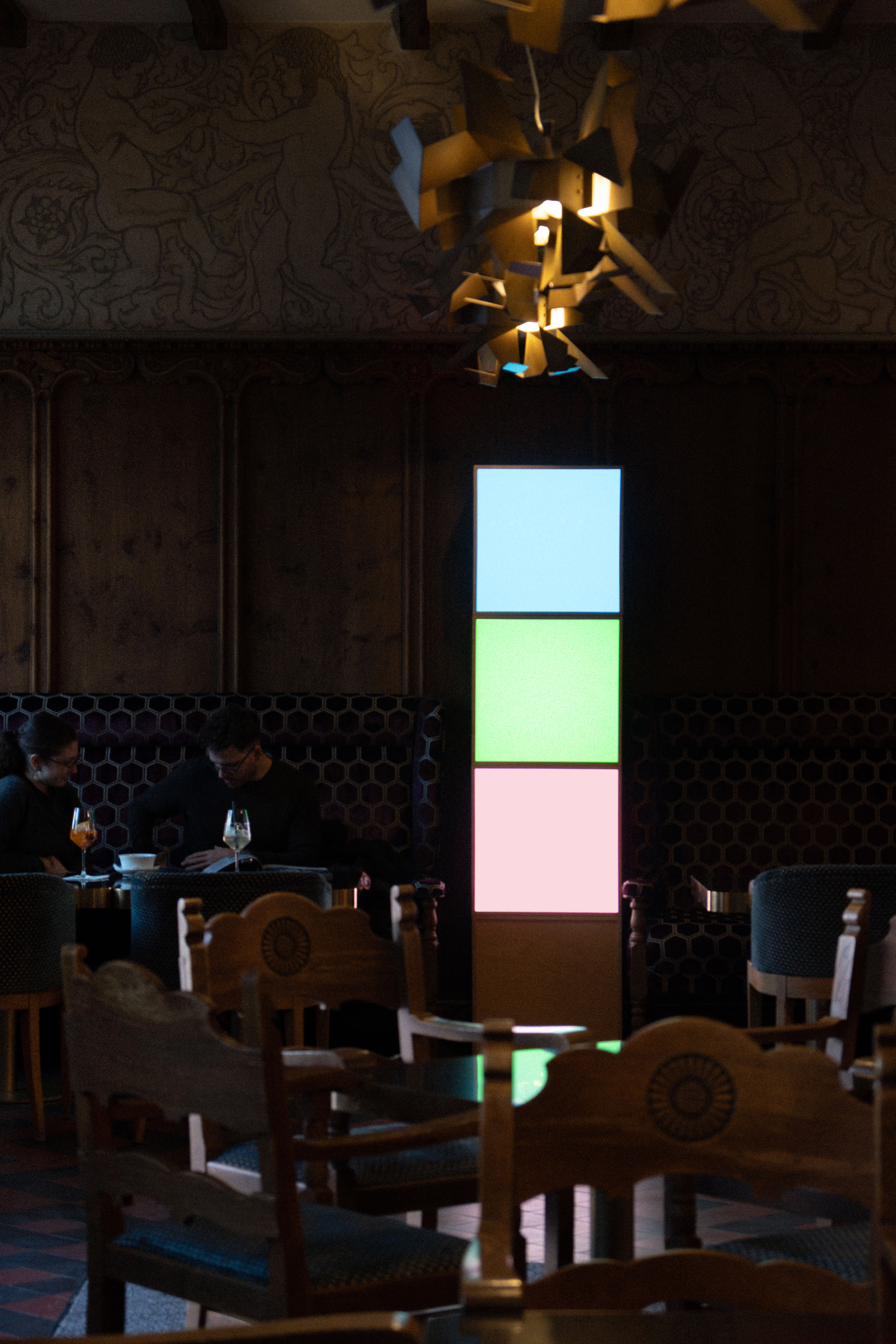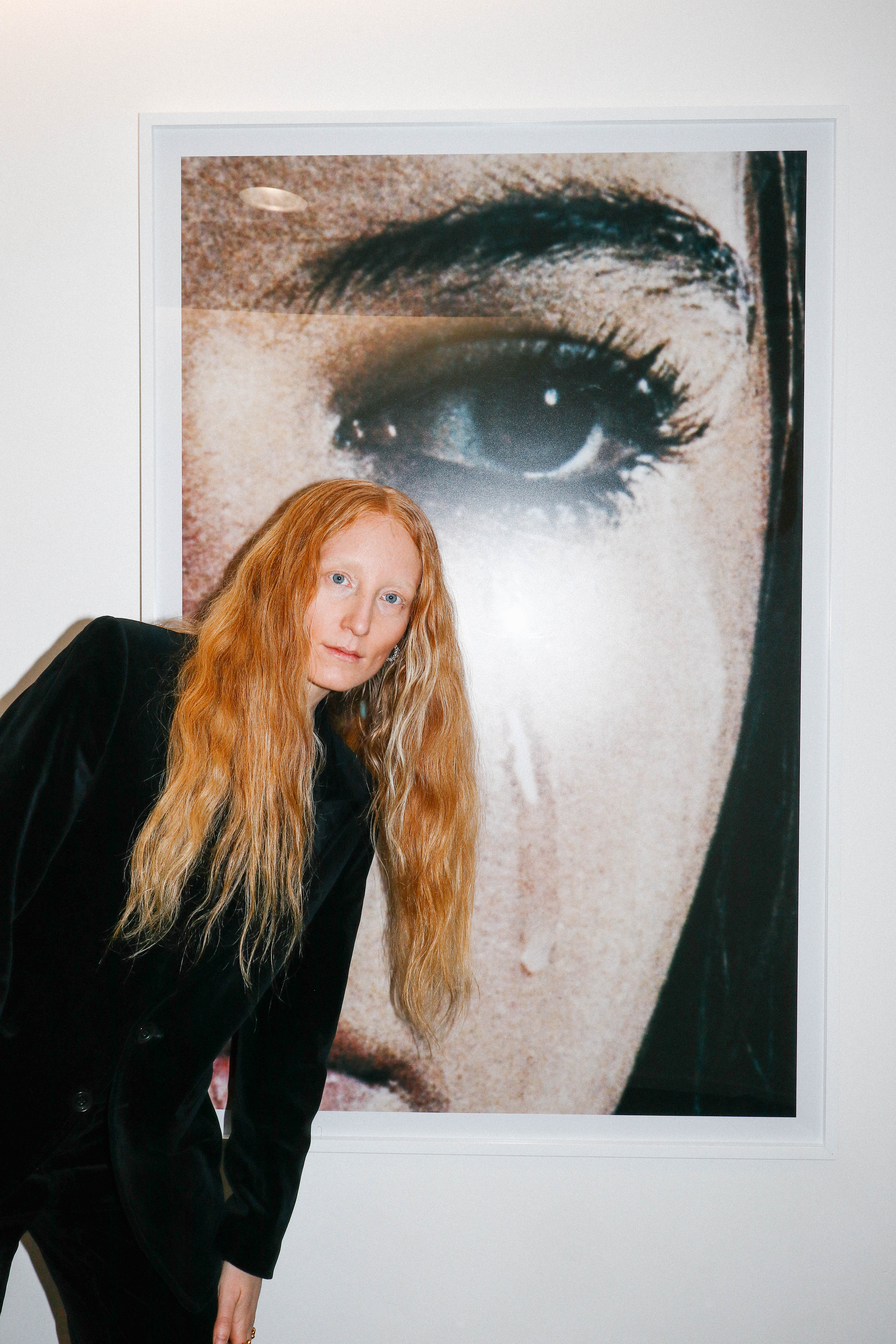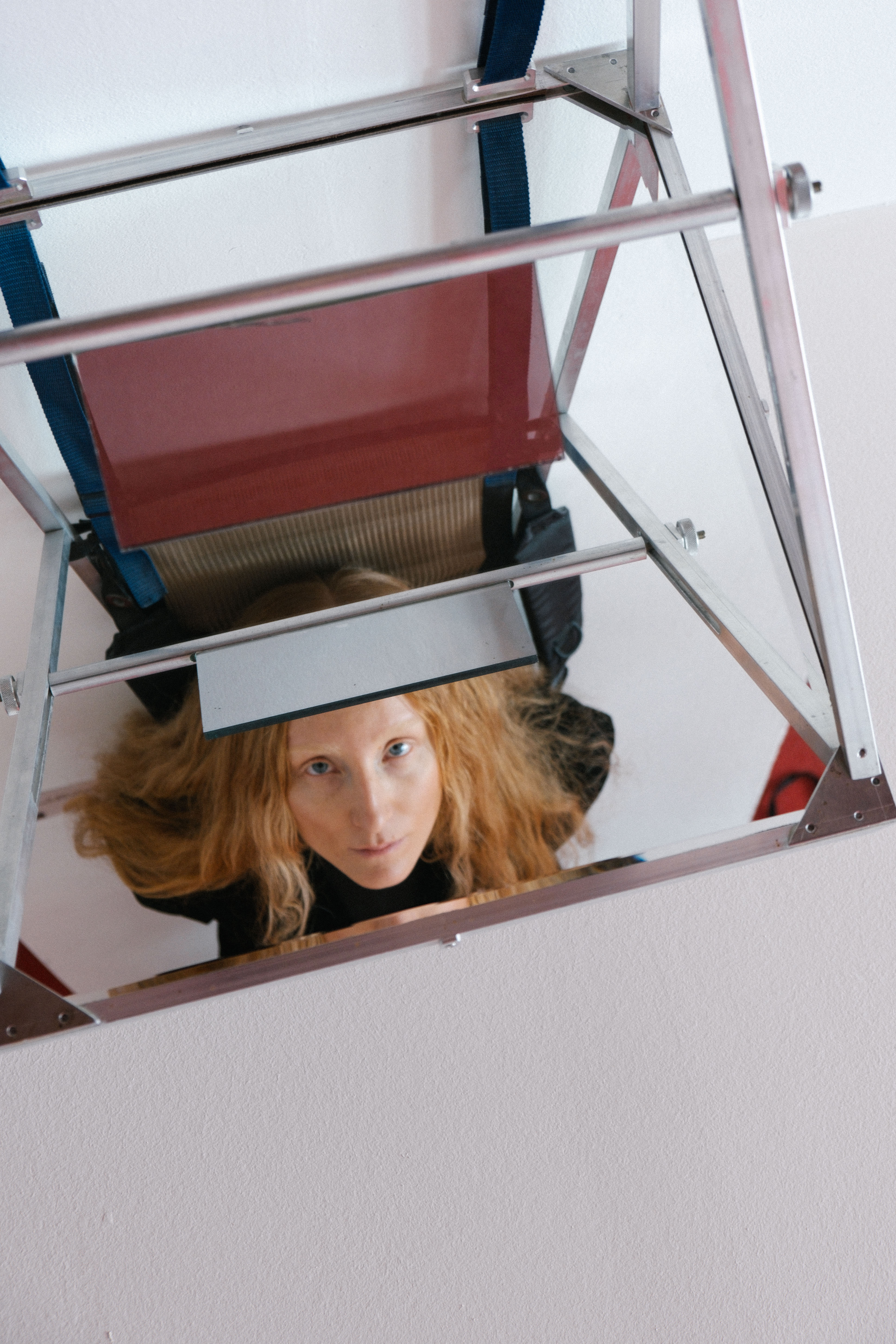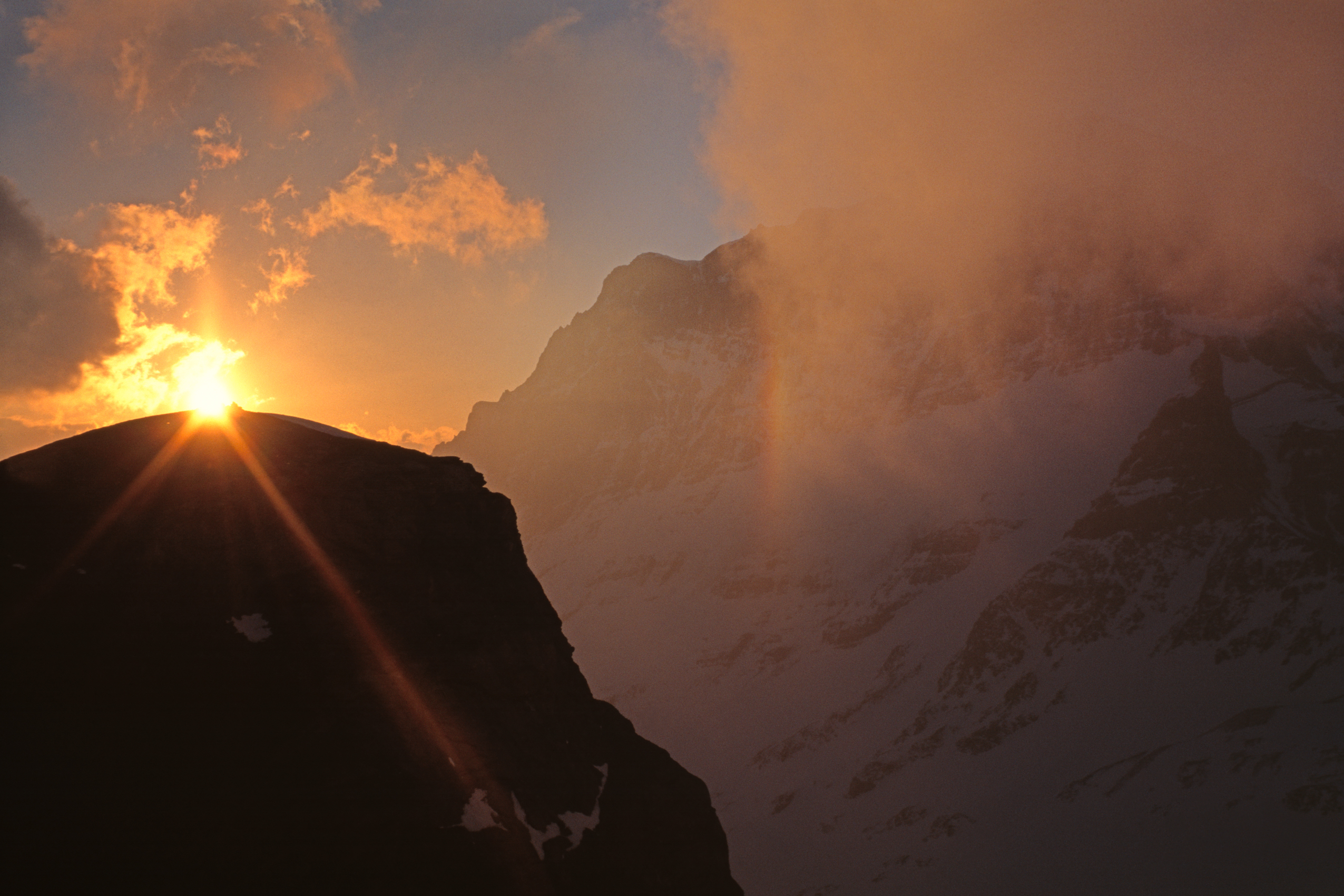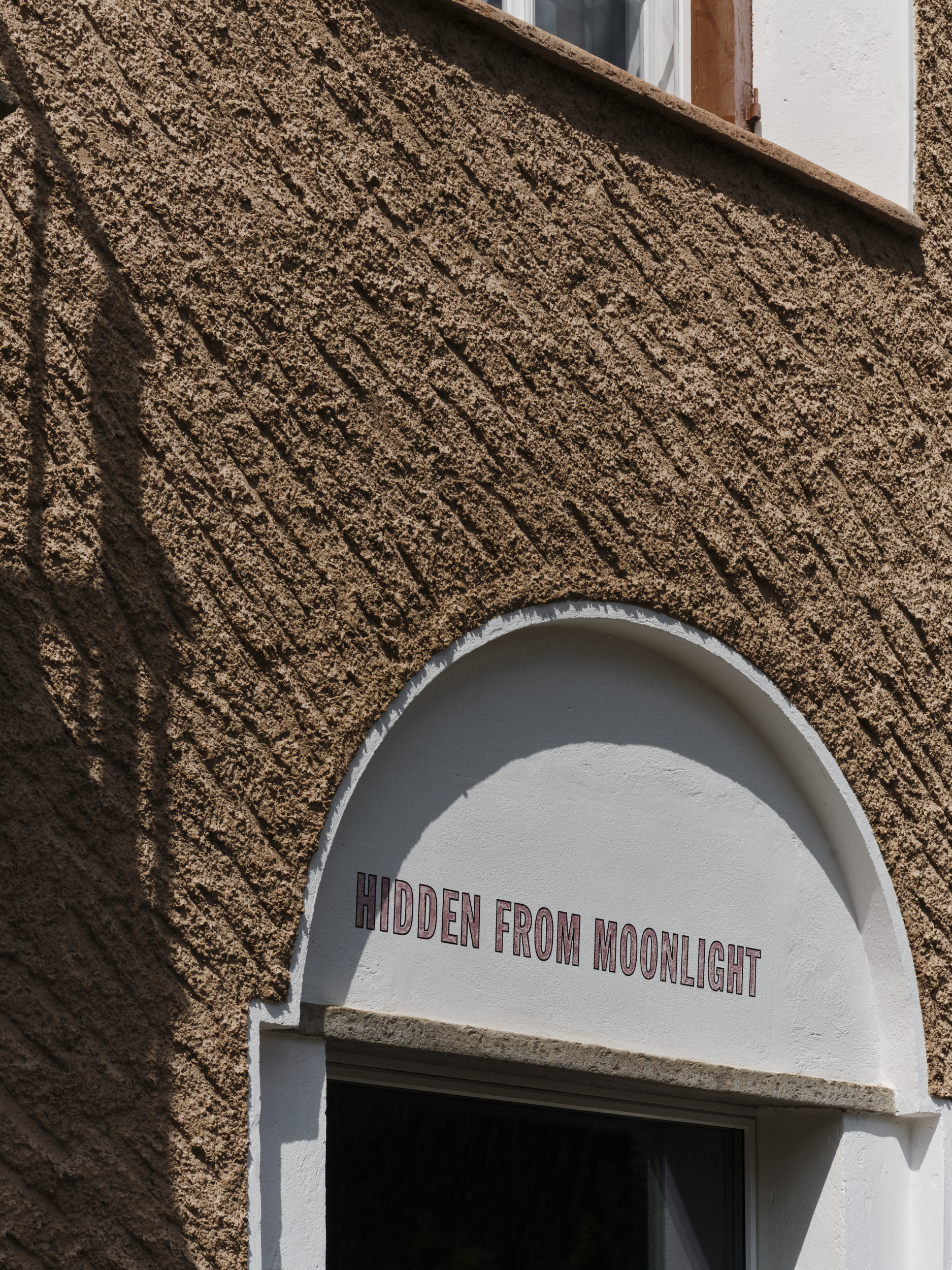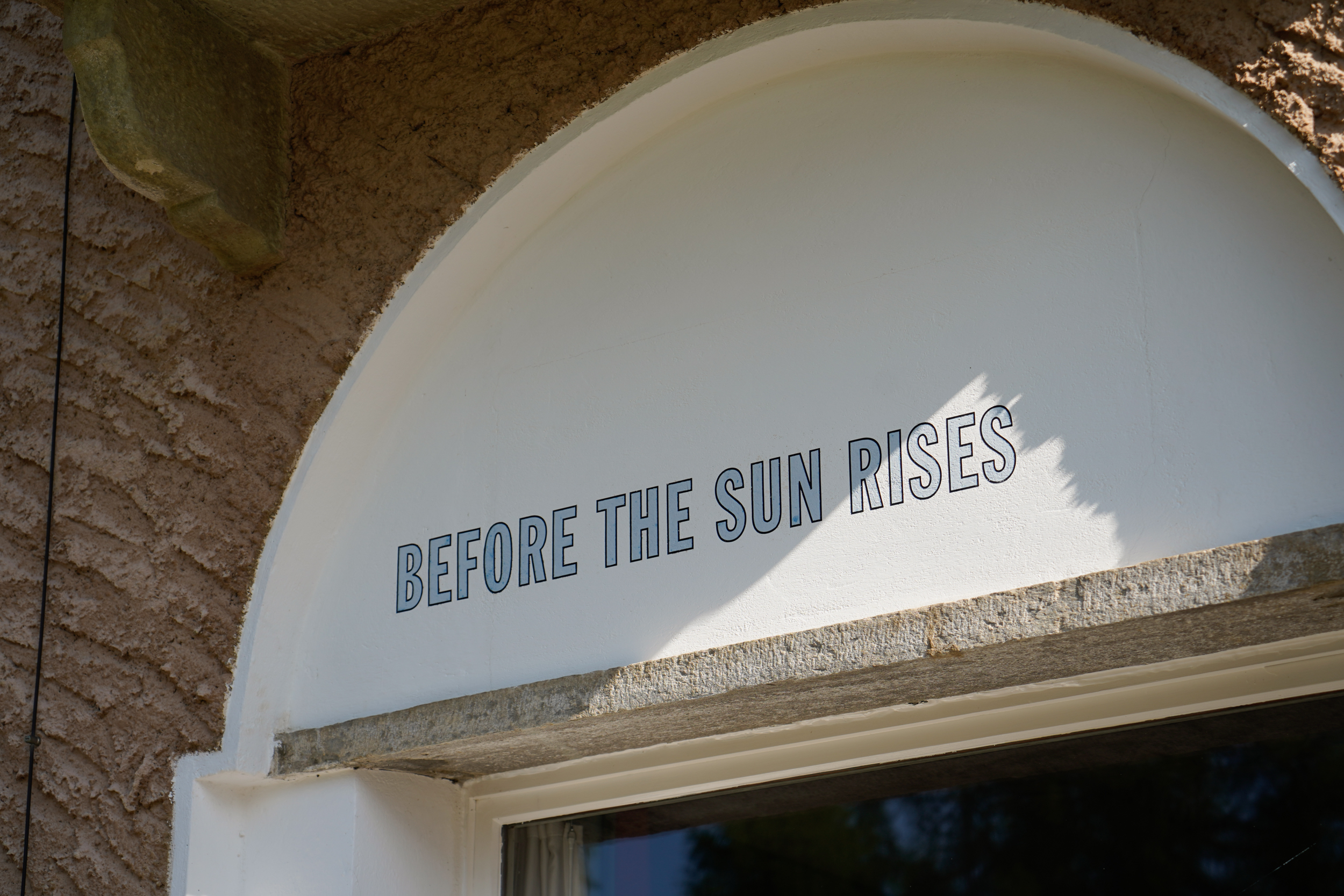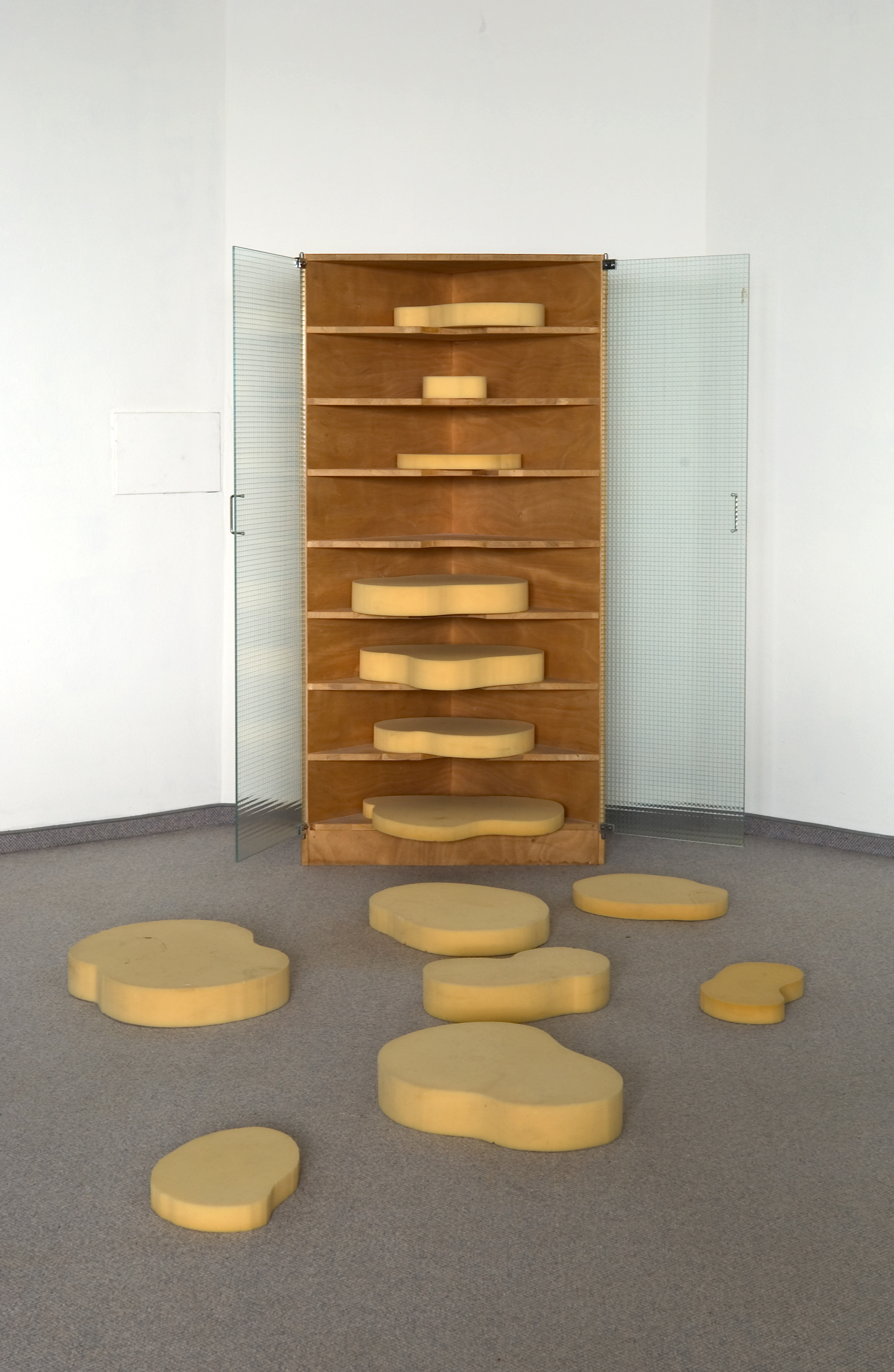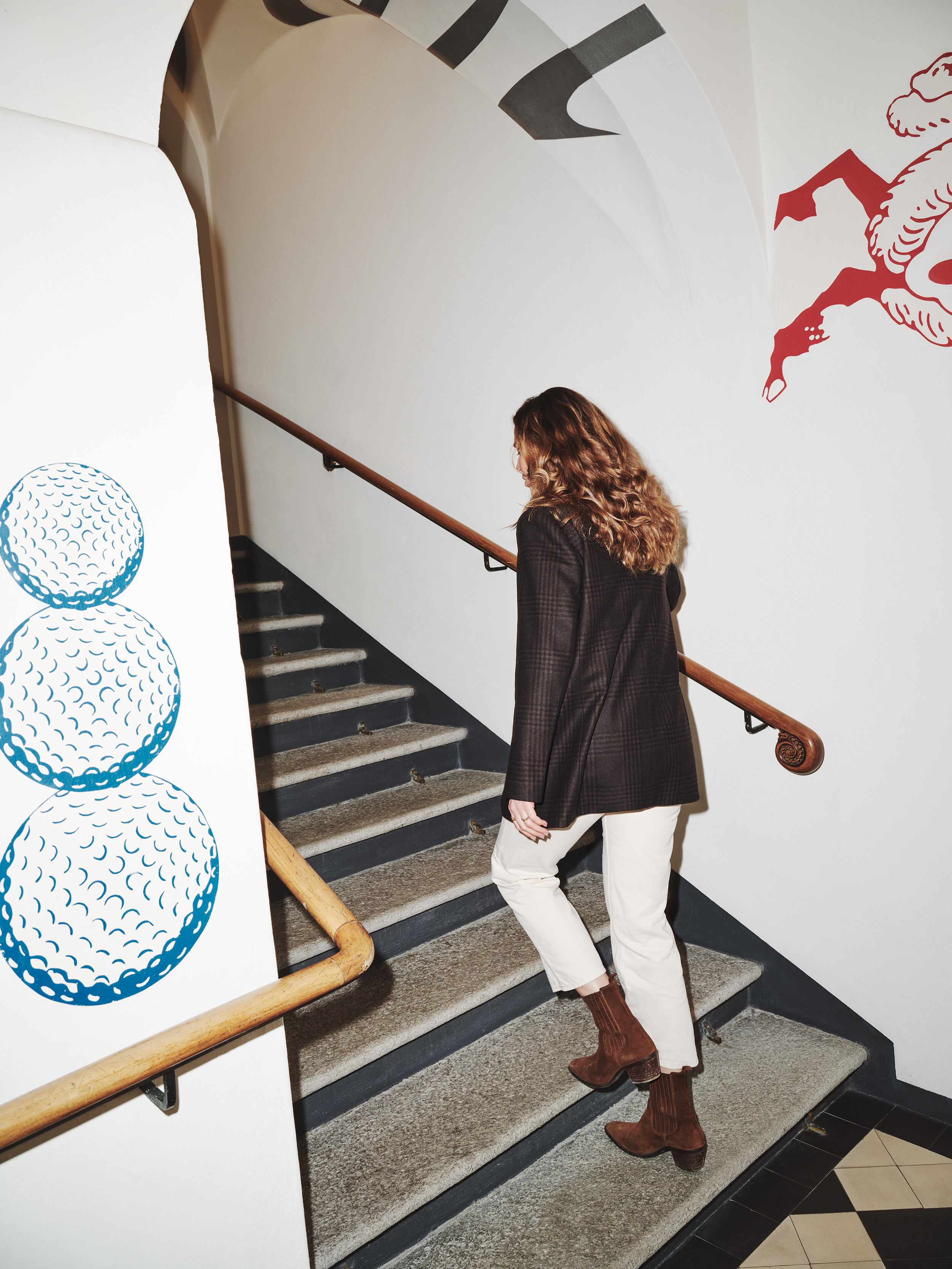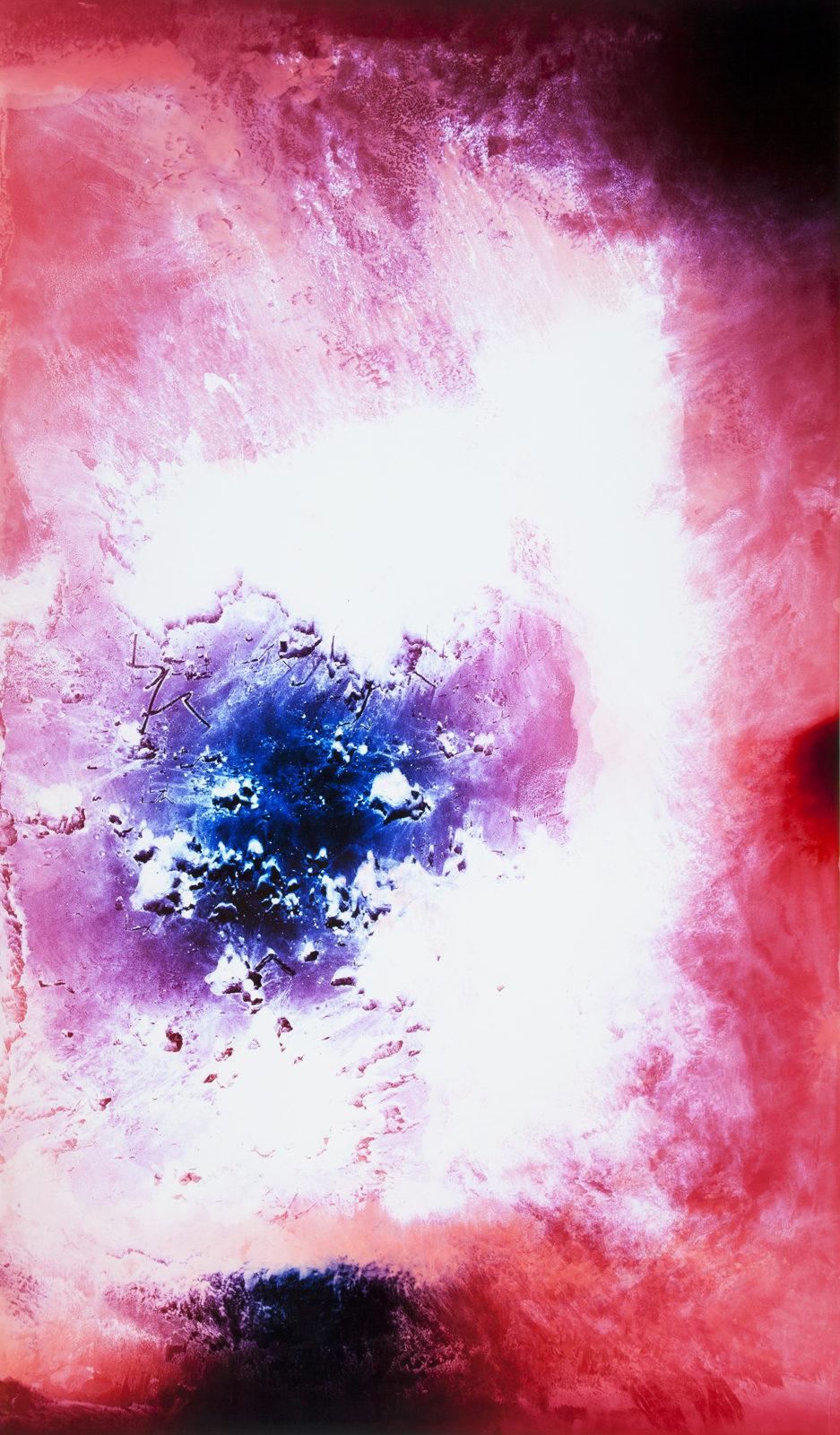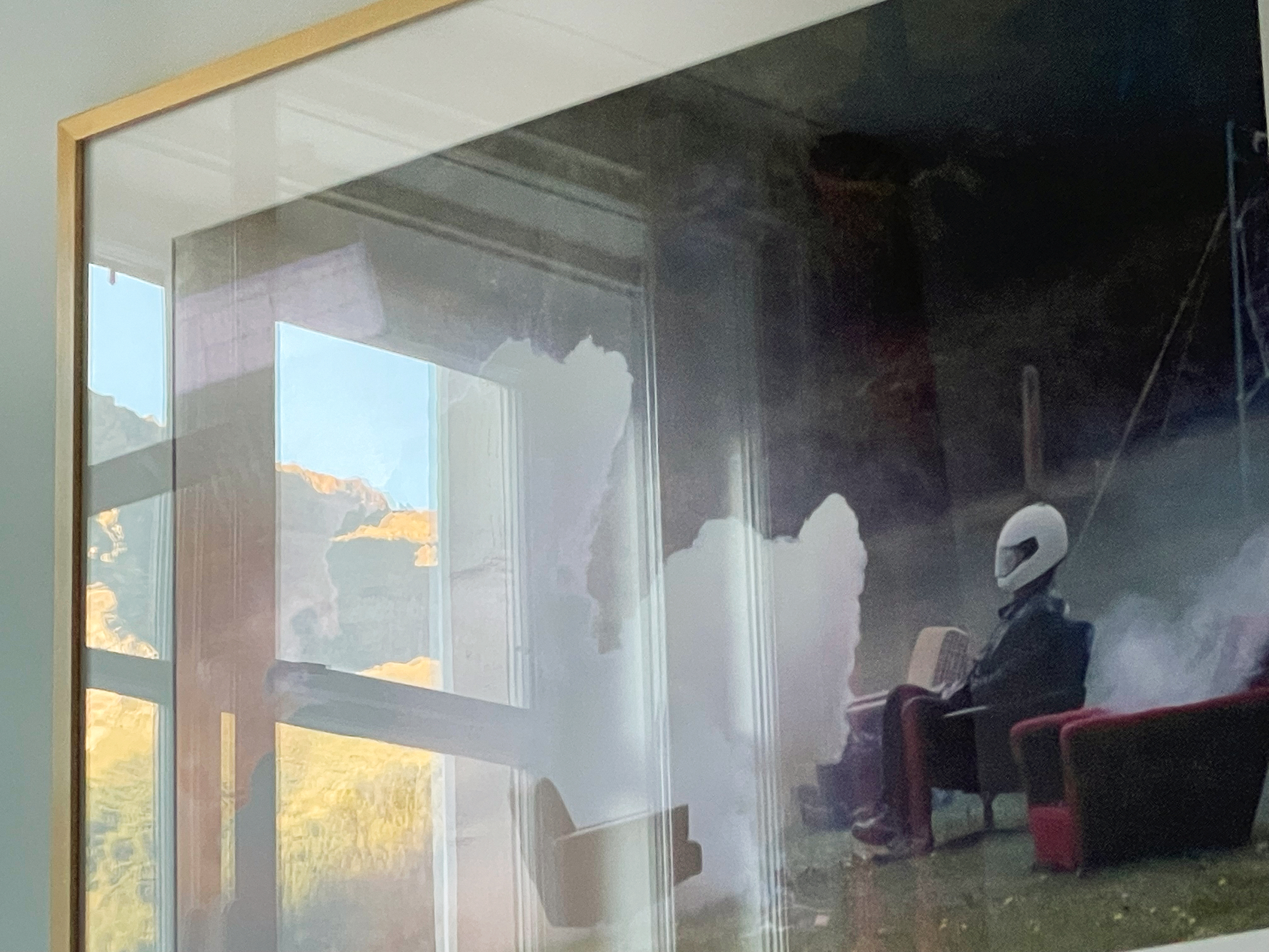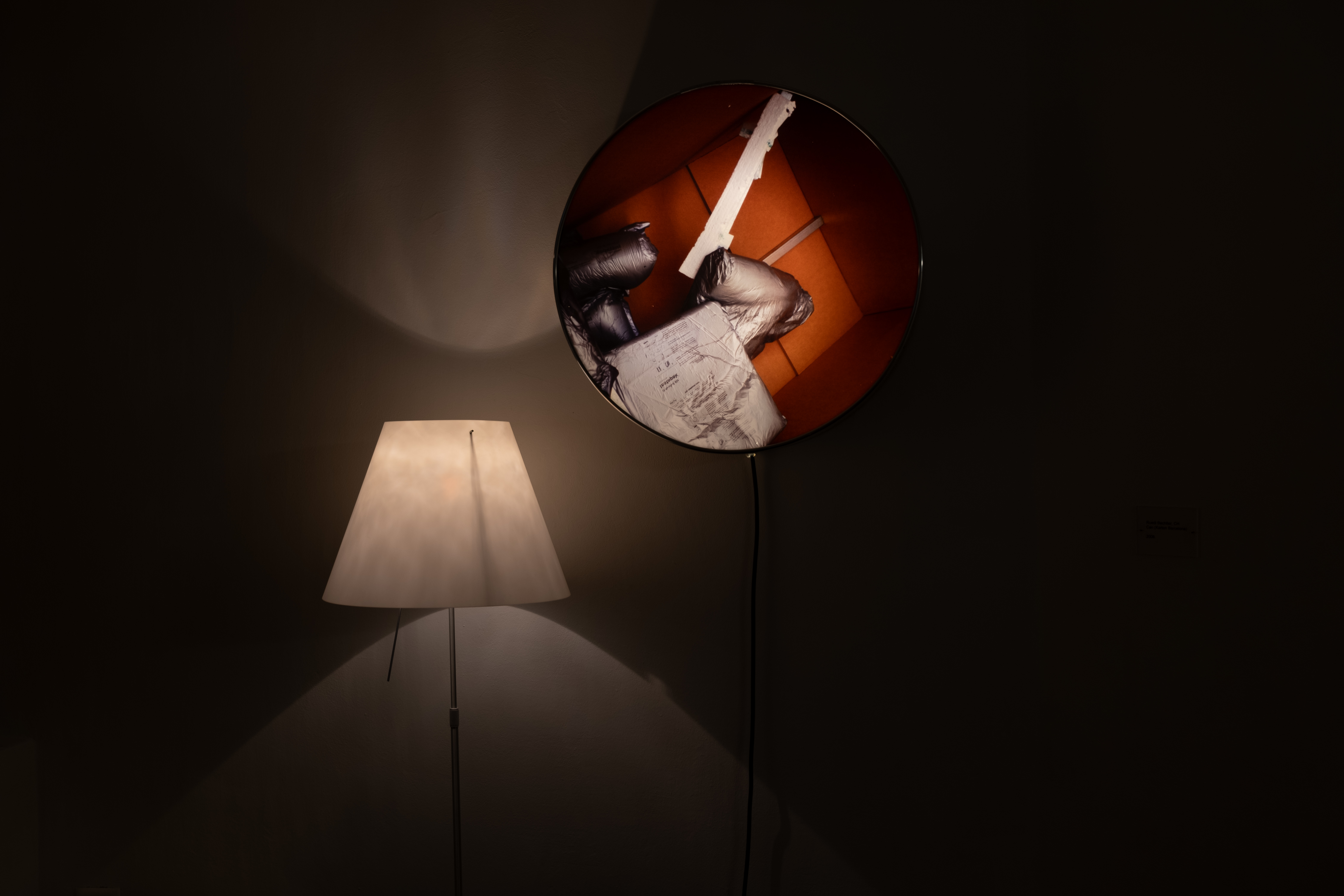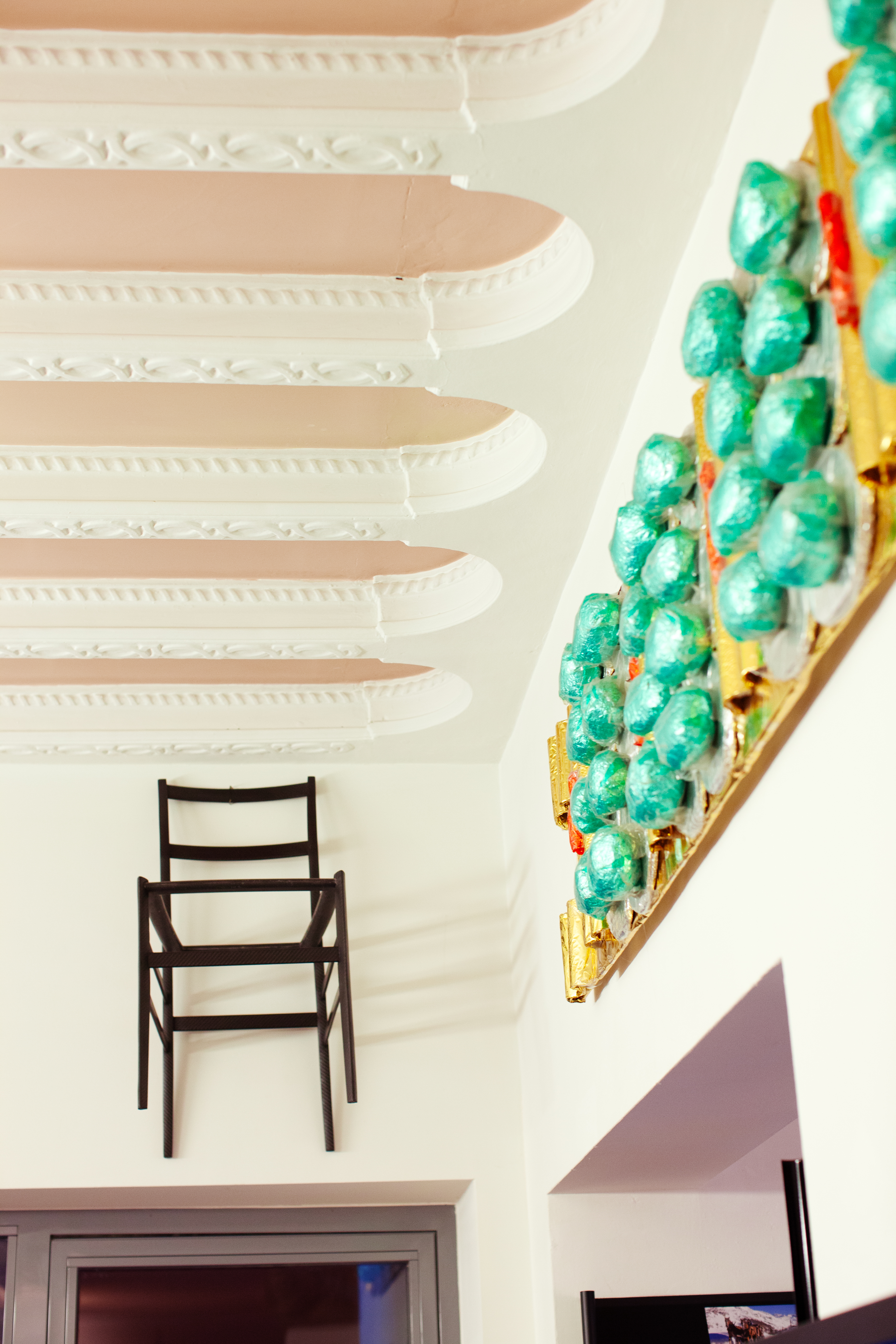
Art
collection
Castell
Art Collection
Personal
& vibrant
Art is an integral, vibrant and highly meaningful element of the Castell. Even the building itself is a work of art. And it offers the ideal home for Ruedi Bechtler’s large art collection. The corridors, the rooms, the halls: art is everywhere.
Hotelier Ruedi Bechtler chose and placed every single work of art personally and often in close collaboration with the artist. Many of the works were even created in or especially for the Castell.
In this way, the collection, with its contemporary works of media art, sculpture, installation, painting, drawing, video and photography, decisively shape the Castell’s distinctive ambience.

The fan, knowledgeable connoisseur and enthusiastic collector of contemporary art has made the Castell into a unique place of inspiration. Works are regularly changed or rehung. A recurrent stay or a short visit is definitely worth it.
Every Thursday from 5 to 6pm, hotel manager Matthias Wettstein conducts a guided art tour through the building and the collection.
Sign up by 12 noon on Thursday (limited number of participants).
An overview of
the collection
Andrea Büttner's works always go beyond what they appear at first glance. The images she creates or uses – woodcuts, photographs, moving images – often deal with traditional crafts or handed-down material and thrive on the tipping point of their meaning. In the image constellations the artist creates, a field of tension arises between subjective perception and notions of culture, between ethical and aesthetic questions.
Additional works:
Phone Etching, 2015
Duck and Daisy, 2015
Potatoes, 2017
Angela Bulloch is interested in the mechanisms and power relations at work in the social system. In many of her works, the human being is a constitutive element. This is also the case in “Mat Light Switch Piece” in the entrance of the hotel: as soon as you step on the mat in front of the artwork, the ball lamp begins to glow.
Anne Collier's conceptual photographs reproduce found image material, for example advertisements or record covers. By focusing on specific image details, she deconstructs the idea of the innocent image. In doing so, she shows how the representation of emotions is often romanticized in a sexist way.
Additional work:
Woman With A Camera (Postcard, The Chieftains’s Daughter), 2014
The artist Barbara Gut, who comes from Central Switzerland, uses well-known and marginal folkloric and religious figures and motifs from a variety of popular contexts. She uses them to create her own spiritual universe, which she stages in part in elaborate, performative works. It is about existential themes and the transience of life, staged in a solemn way.
Man is at the center of Carsten Höller's work. During two Art Weekends, he gave lectures, showed films, and conducted experiments with the guests. For example, the Expedition Backpack enables you to see yourself approaching in the mirror. His biological background knowledge is incorporated into his interactive works.
Additional works:
You can reach the Sky, 1992
Dans La Boue, 1997
Spieltafeln, 1998
Chantal Michel uses only her own body in her performances, video works and photographs. She stages herself in real spaces, not theater backdrops, in a variety of ways. In the rooms of the elegant Scribe Hotel in Paris, she absorbs the atmosphere of the place and transforms it into a whimsical world.
Christine Streuli develops her images in a clear and often comprehensible way by placing elements next to and on top of each other. In the process, she selects patterns that she mirrors, duplicates, continues and perhaps confronts with an additional element. The resulting color carpet triggers associations and takes us on a pleasurable journey into a new world.
Additional works:
Globe, 2005
Sumo, 2005
David Renggli creates still lifes with little inconsistencies. His interventions in the scenery are only recognizable at second glance. His photographs are confusing and inspiring at the same time. The perceptual confusion is not computer-generated, but each situation is actually built and forms the template for the gripping photograph.
Additional works:
Spiegelung, 2002
Slowmotion, 2002
Salatlippen, 2003
Parallel, 2003
Von Vasen und Löffeln, 2004
David Shrigley loves to present the absurd in an ironic and humorous way, as in the neon object “It's Freezing in Here”, the oversized nail in the bar or the photographs in the corridors. He became known for seemingly harmless drawings in black ink, which only on closer inspection turn out to be dark commentaries on our times.
Additional works:
Leisure Center, 1991
Hell, 1991,
Notice, 1996
Try to be Happy, 1996
Which is better, 1996
Ignore this Building, 1996
Sculpture of a Nail, 1999
During the renovation of the Hotel Castell in 2004, Erwin Wurm was invited to the annual Art Weekend. In this context, he created an extensive series of photographs showing interpretations of the “One Minute Sculptures”, for which members of the Bechtler family and the gallery owner... were transformed into temporary sculptures under the direction of Erwin Wurm himself. In the snowy surroundings of the hotel, the poses appear to be frozen. Sometimes the sculptures seem funny and comical, at other times disconcerting and even frightening.
The artist duo Fischli Weiss is concerned with the meaning of things, using humor and imagination to question our self-evident assumptions and offering us a playful view of our everyday lives. In their Alpine and flower pictures, they play with the human yearning for purity and wholeness.
Additional works:
Stiller Nachmittag, 1985
Hocker, 1987
How to work better, 1991
o.T. (Blumen), 1998
Sichtbare Welt, 1987/2004
o.T. (aus Ansichten der Welt/«Diatisch»)
Francis Alÿs, who lives in Mexico, takes long walks in big cities. He carries out unusual actions, which he documents and whose effects flow into his objects and drawings. The red balloon demonstrates gravity and vulnerability – it is held in place by two knitting needles and will fall to the ground as soon as it shrinks.
In the Jägerstübli, the diverse hunter's yarn swings out of the trophies and into the air. The local flora mingles with rare plastic parts, with rare finds, both extinct and newly invented. The distribution of prey, electricity and food harmonize in this room. Because, whatever has been hunted and shot sooner or later ends up on the plate. Text: Steiner/Lenzlinger
The central drive of Ida Ekblad's artistic practice is the process of transformation of materials, images and ideas that takes place with the creation of her paintings, sculptures or objects. Her gaudy, oversized paintings and surrealist sculptures seem familiar to us and yet completely new. This game is seductive and exposes the viewer's perspectives and expectations.
Additional work:
Lagavullin Bitch, 2015
Irène Hug works with language and its manipulative use in the context of global commercialization. Her longstanding and consistent examination of the mechanisms of (visual) language in our everyday lives is based on her training as a graphic designer and painter. With visually attractive murals, signs, sculptures and photographs that make use of the aesthetics and logic of advertising billboards, street signs and billboards, Irène Hug's work seems at first glance to invite unconditional consumption. On closer inspection, however, this invitation turns against itself. The works reveal themselves as strategically deployed manipulation to deconstruct our everyday unreflective consumption of language. With the convincing slogans, Hug subtly undermines the illusion of the objectivity of the world and its representations. The reflection of the effect and power of language beyond its mere message is transferred to the viewers.
James Turrell, who has become internationally famous for his light art, also gives space to light itself in Zuoz and builds an open cylinder from which the ever-changing sky can be observed, inviting the viewer to dream and reflect. From a seat, you also have a view of Piz Uter.
The American artist Jason Rhoades works primarily with themes such as sex, violence, and desire, combining these topics with the peculiarities of puritanical American society. His installations are usually of immense size. The two objects “Inner Light” represent the female principle.
Additional work:
Inner Light (grün/blau), 1998
Julian Charrière works with and in nature. Geological and climatic phenomena and remote landscapes serve as a starting point for his explorations, which result in cinematic and photographic works, as well as sculptures. He uses materials that reflect the fragile balance of the earth as a living space. In doing so, the artist playfully takes on the role of explorer and discoverer.
Additional works:
Metamorphism LV, 2016
Polygon – Pyervaya Molniya I, 2014
Enyu IV – Terminal Beach, 2016
Towards No Earthky Pole Aurora, 2019
Kerstin Brätsch often paints fascinating images on paper or plastic, with traces of her brushwork in a variety of colors. She constantly cites from the history of abstract avant-garde in her paintings, although she also amends and corrects it. It is a progressive process that never fails to surprise. In 2007, Brätsch and Adele Röder founded DAS INSTITUT, a joint project in New York.
The creation of figures is at the center of Klaudia Schifferle's paintings, drawings, and sometimes sculptures. These anthropomorphic figures sometimes merge with abstract-expressive forms or are surrounded by scribbles reminiscent of écriture automatique. Gesture and language combine with these often humorous characters, which are something between objects, animals, and people.
Additional works:
o.T, 1985
Paperdolls, 3 Bilder, 2012–2013
o.T, 2013
o.T, 1987
Lawrence Weiner works with language, i.e. with the meaning of terms. His works are formulated subtly and precisely. He has conceived a work for the hotel on the south façade near the terrace that deals with the sun, moon and wind and offers guests the opportunity to find a new approach to the place with these statements.
With John Baldessari:
The Methaphor Problem, 1999
The papier-mâché figure is one of a series of works that began in 1999. They originated in Mai-Thu Perret's fictitious diary entries about a utopian women's society living in the desert of New Mexico, leading a life according to their own ideas. The works are loosely associated with the lives of these women.
Additional works:
Girl with Target Gloves, 2004 (in Zusammenarbeit mit Ligia Dias)
Keramik, 2007
Heart and Soul XXVII, 2007
Radio Transmission, 2008
Echo Canyon (Little Golden Rock), 2006
Eurydice et Orphée, 2010
Kippenberger works in the tradition of Dada and Fluxus to dismantle the traditional concept of art, using, among other things, provocation and ridicule. One of the underground entrances of his Metro Net project is located at the Zuoz golf course. In this way, golfers are directly connected to his imaginary underground metro network in Syros, Dawson in Canada and Leipzig.
Martin Senn gives everyday objects a new identity in his precisely arranged still lifes. With humor, a narrative touch, and a love of detail, he subverts the objects' function. An ironing board, for instance, becomes a stage for everyday objects.
Additional works:
On Stage, 1993–1996
Konstruktionen und Träume, 2004
Entwürfe zu Wohnen in den Wolken, 2006
The three women of Mickry 3 build secondary worlds out of cardboard and plastic. The objects in the display case belong to the supermarket. A witty shopping paradise where all the products are handmade but still mass-produced. Erotic and wicked, futuristic and humorous.
Additional works:
Mutter Teresa / Aloe Vera, 2004
The Thinker, 2007
Nic Hess does not draw with a pencil, but with adhesive tape, which he combines with painting and sculpture to create new installations. He uses well-known signs, emblems, logos and trademarks from different cultures and everyday areas.
Additional work:
ESS (Easter Sports Syndrome), 2004
In a psychedelic, illusionistic world of forms and colors, loosely based on a modernist formal vocabulary familiar to many, the artist Nicolas Party deals with questions of figuration and abstraction in painting and sculpture. Central to this is the element of deception: painted curtains or plinths with trompe-l'œil marble surfaces create stage-like settings for the organic and figurative motifs of this pictorial world.
The diverse codes, symbols, trends, and images that shape our reality are the subject of Olaf Breuning's work. He takes pop-cultural references and media from the perspective of a Western pictorial memory and reinterprets them. With his artistic practice, which spans painting, performance, video, installation, and photography, the artist often leads his viewers into imaginative worlds. The Marilyn series highlights a particular feature of Breuning's photographic and performative works, namely the use of actors and characters who are depicted in frontal positions and in spectacularly dressed, coded and sometimes contradictory narratives. It also points to the influence of US culture on his artistic practice, especially considering that he has been working in New York for over twenty years.
In his conceptual installations, the artist Olaf Nicolai deals with spatial bodies, always with a focus on the relationship between architecture and the human body, or between nature and (living) space. For example, for one series of works, he commissioned architecture firms to design houses for bee colonies.
In the basement, Olivia Etter has created a veritable riot of color in the house gambling den with her fantastic painting. Funnel shapes and snaking pipes conjure up an almost infernal atmosphere.
Peter Regli's work consists of subtle interventions in public space. His so-called “reality hackings” always take place unannounced. In 2002, he carried out “Reality Hacking 199” in the Engadin: a night-time ski descent with local ski instructors carrying fire brigade lamps. Like fireflies, the lights wound their way down the slope, across the snow.
Additional works:
RH 199, 2002
Reality Hacking 121, St. Anna Glacier, 1997
Reality Hacking 083, Rhone Glacier, 1997
Reality Hacking 156 a, New Mexico, USA, 1999
With the “Red Bar”, artist Pipilotti Rist and architect Gabrielle Hächler have created a refreshing alternative to the traditional fireplace bar. Both have succeeded in creating a situation in which the two spaces mutually influence each other. Tucked away in the bottles on the wall shelf are video projections by Pipilotti Rist.
Raphael Hefti is a researcher who pushes industrial processes to the extreme – he overheats metal rods or glass plates to create new and unexpected color patterns. He has heard that the spores of wild garlic moss can be used as a “flash”. He collects the spores, takes large sheets of Fuji positive photo paper and ignites the powder on it in total darkness. The results are sensational, volcano-like “paintings”. A unique invention.
Roman Signer studies the forces of nature and uses them in his work. The conceptual artist and performer specializes in actions involving explosives. His “small events” are full of drama and conceptual absurdity. With a small intervention, he has succeeded in transforming the kitschy bronze horse into a great sculpture.
Weitere Werke:
Tisch mit Raketen (Furka), 1993
Eingriff vor Ort, 1996
Kleines Ereignis (Zuoz), 1996
Sinclair achieved international fame in 1994 with his project Real Life, when he had the words “Real Life” tattooed on his back. Since then, the project has developed into an ongoing performance in which he works with various media, including painting, music and installation. His artistic work reflects on forms, materials and processes of contemporary art practices, using everyday materials in unconventional ways. The Real Life project has been shown in various exhibition and publication contexts since its inception.
The words Spiritual Gold, which hang above the spirits in the Red Bar by Pipilotti Rist and Gabrielle Hächler, are part of Sinclair's Real Life project. They humorously play on the saying that refers to alcohol as “gold for the soul”.
Additional work:
T-Shirt Paintings, 1996–1998
Play, chance, wonder, vitality, decay are central themes in the work of Ruedi Bechtler. He often deals with the functioning of the human brain and tries to outwit the viewer's perception with flip-flop drawings or combined photos, in order to give an impulse to reflect on one's own way of perceiving.
Additional work:
Holzzeichen o.T., 1984
Simon Starling's investigations often revolve around the transformation or production of an object. For example, he rebuilds an Eames chair. He himself calls his work a “physical manifestation of a thought process”. New perspectives arise and the images surprise.
Additional works:
Home-made Eames (formers jigs, moulds), 2001/02
Heinzmann, Uni-Solar Trek, 2001 / 02
motion control / molino, 2007
Pictures for an Exhibition, 2013–2014
Flaga, 1972–2000
In their work, the artist trio Superflex questions the mechanisms of the economy and challenges them with their actions. The reactions of the companies are then incorporated into the work as integral components. In this way, the complaint of a fashion label is taken “seriously” and the usurped brand names are visibly painted over.
Additional works:
Copy Right (single chair, brown chair), 2001
Lacoste / Light blue, 2002–2007
Kawamata's installations, made of used and raw wood, evoke associations such as “temporary, transient”. His artistic initiatives are deliberately designed as projects and have a social dimension. They are usually created in collaboration with local artisans, art students, or marginalized groups. In the Castell, the rock pool is ideal for saunas and subsequent meditation in front of the water basin.
Additional work:
Field Work, 1990
Thomas Hirschhorn is known for the political statements in his art. He builds chaotic, seemingly unmanageable structures out of cheap aluminum foil, plastic, cardboard, and plywood packaging materials from the consumer industry, thereby questioning the present day.
Tobias Madison works with digital imagery, often using the tools of commercial designers to produce it. He sees the appropriation of these tools as a way to create a universally accessible, abstract language. For the works Gold and LaserBlue, he scanned CD surfaces with a scanner, generating seductively diffuse forms.
Additional works:
o.T, 2008
DMOCB/ for E, 2009
Tobias Rehberger's work has been on the border between art, design, and architecture since the 1990s. His often room-sized, stage-like works oscillate between functionality and immersion.
Wade Guyton succeeds in citing and critically questioning the ideological legacy of conceptual art in the context of modern times. By choosing unconventional production methods, he subtly develops their concepts in terms of both form and content. He repositions painting, which here seems to contradict the combination of an unconventional technique with a traditional mode of presentation.
Additional works:
o.T, 2005/ 2006/ 2007
Parkett Edition, 2008




